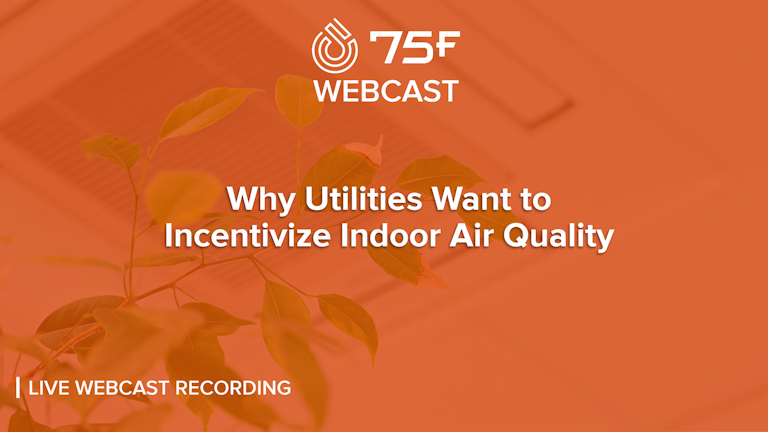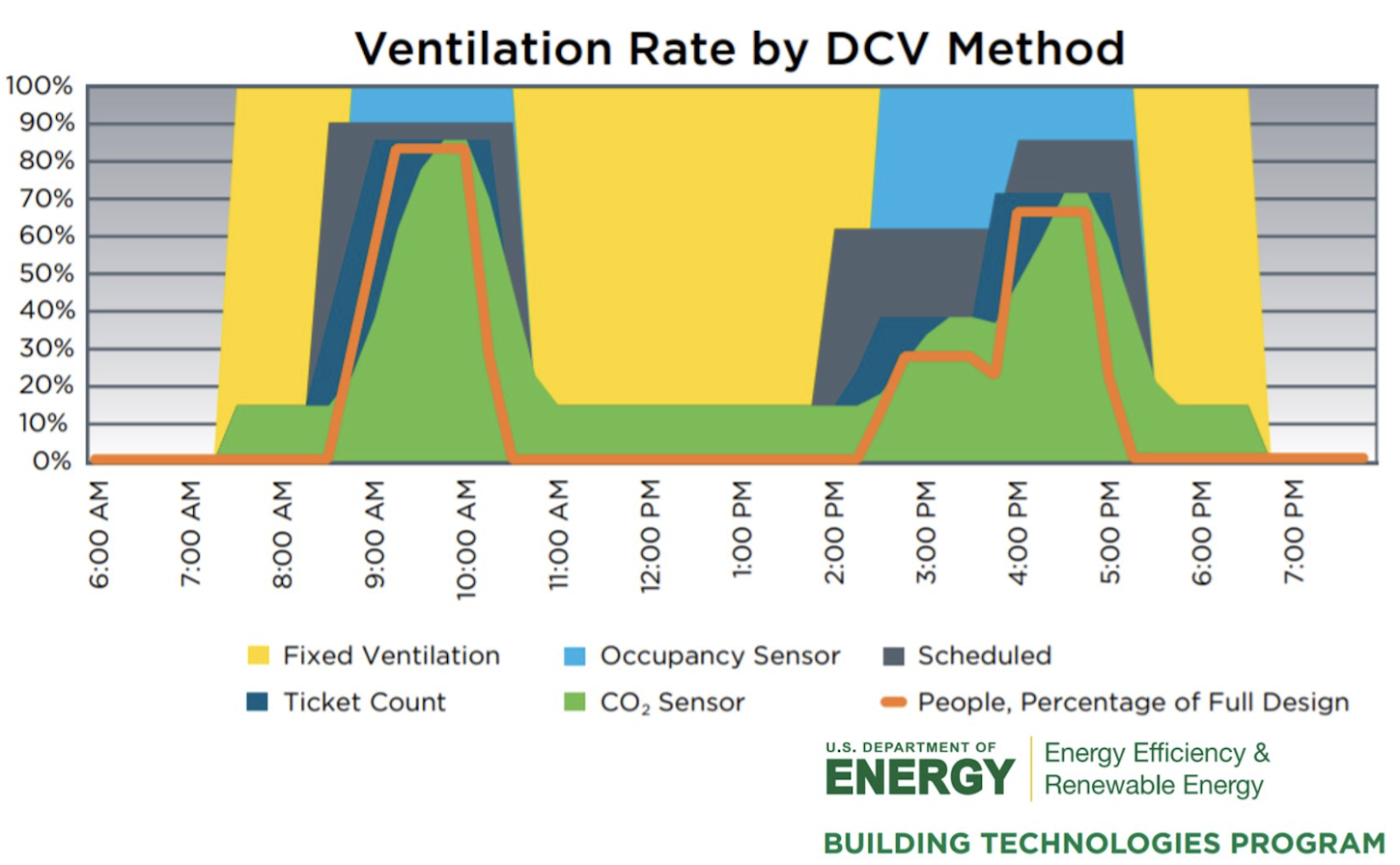
Healthier Buildings Series: Why Utilities Want to Incentivize IAQ
While most people associate utility incentives with building efficiency upgrades, the COVID-19 pandemic has begun to spur utility providers to start initiatives for indoor air quality (IAQ). In 75F's Dec. 15 webcast session, we discussed this shift with Great River Energy and Vermont Energy Investment Corporation.
Webcast hosts are 75F Chief Evangelist, Bob French; Jill Eide, Member Commercial Industrial Agricultural strategist at Great River Energy; and Marcus Jones, Energy Consultant at Vermont Energy Investment Corporation. To watch a recording of this session, please follow the above video link. Those who prefer to read our presentation slides in PDF format can do so here. For a recap of webcast content, read on!
How COVID-19 spreads, and why ventilation is important
In order to understand why utilities are motivated to incentivize IAQ, it's first important to grasp how COVID-19 spreads.
Infectious COVID-19 particles mainly spread via person-to-person contact. This falls into two categories: airborne aerosols expelled when an infected person coughs, sneezes, speaks or breathes, which someone else then inhales; or when someone touches a surface with infectious particles on it and then touches a mucous membrane (their eyes, nose, or mouth). However, medical experts acknowledge the second category is less of a concern than the first.
To mitigate airborne COVID-19 transmission, respected organizations such as the Centers for Disease Control and Prevention (CDC) and the American Society for Heating, Refrigerating, and Air-conditioning Engineers (ASHRAE) recommend increased outdoor air ventilation. 75F has covered this topic extensively in the past. Click to about 6:45 in this webinar replay for a primer on how outside air fractions are managed.
Facility managers have likely learned over the course of this pandemic that outside air ventilation — to the extent recommended — is easier said than done. Recommendations change, and most HVAC equipment isn't built for pandemic operation. That's why building automation systems can play a key role in making building operations more manageable during this time.
IAQ now, DCV later
Demand control ventilation (DCV) is a technique that relies on CO2 sensor data to tell HVAC equipment when a zone is occupied, and to what extent, instead of always assuming zones are at full capacity. This way, the amount of ventilation supplied to a zone can match actual capacity, saving valuable energy on conditioning.
Utility providers across the U.S. commonly incentivize DCV because of its well-documented ability to save energy. Take the below graph, for example.

However, the CDC and ASHRAE recommend against DCV during a pandemic. The key tie between utility incentives and IAQ: The same building automation system that can automate ventilation during a pandemic now, can also implement DCV and other deep energy-saving techniquesafter the pandemic is over.
Great River Energy is a wholesale generation and transmission cooperative utility serving about 60 percent of Minnesota. Their Healthy Buildings Program offers incentives for a 75F IAQ Sense Kit and diagnostic report that will help building owners understand their facility's air quality needs.
"With all the current concerns with indoor air quality in relation to spread of infectious aerosols, HVAC controls offer one of the best mitigation solutions," Eide said. "But it really starts first with defining the indoor air quality baseline. That's exactly what the assessment accomplishes."
Efficiency Vermont, administered by VEIC, is a regulated efficiency utility. Jones points to a local school with a 75F pilot running that will allow for two separate heating systems and a new energy recovery ventilator to work in tandem during and outside of the pandemic.
"Right now, the energy recovery ventilator is going to be set to maximum ventilation while COVID is in play," Jones said, "and then it will be able to do DCV across the various inputs in all three of the spaces within the building, always optimizing that energy and indoor air quality."










